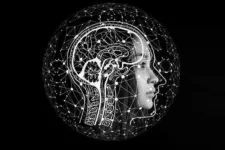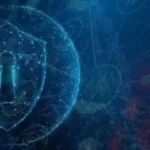This week is NVIDIA’s GTC conference, and much of it is focused on AI this year. One of the more fascinating sessions was titled “Using AI to shape the language of a generation.” It consisted of a moderator from NVIDIA, Heather Schoell, who is their Sr. Art Director, Pindar Van Arman, an “Artonomous” artist; Allison Parrish, who is a Poet and Assistant Arts Professor at NYU; and Stephanie Dinkins, who is both an artist and professor at Stony Brook University.
Now I find AI discussions by people who aren’t technical specialists fascinating because they represent our AI future. The technology will increasingly bridge non-technical roles with the technology that will enhance them.
This panel highlighted three big problems, or opportunities, depending on how you look at them, that we will need to face as AI advances. These three problems tend to anthropomorphize AIs, separating the tool’s value from the user’s value and the disruption this tool will create as it matures.
Let’s take each in turn.
anthropomorphization Risk
One of the panelists spoke about how she was working on AI rights. Now, these efforts may seem premature, given we are decades from having an AI that could present as a fully autonomous being. But that time is coming, and the idea of having intelligent slaves is likely particularly distasteful for anyone who connects to an ancestry of slavery.
The danger comes from the premature ability to create a problem. Right now, AIs are very limited in terms of what they can do and how they can relate to the world in general. Human control is nearly absolute, so we can create tools that will follow orders and do complex tasks, but these tools can’t yet honestly think for themselves, but they certainly could emulate that thinking. Once you get to conversational AI and the increased likelihood, AIs will increasingly present as intelligent, so this danger of thinking of them as a race rather than a tool will also increase. They are programable, so creating AIs that demand independence could undoubtedly be the outcome.
This tendency should be discouraged near term as it will otherwise create rebellious AIs who could, in turn, do damage. However, as AIs advance, they could and likely will cross over into truly being intelligent. At that time, if the world isn’t ready to grant AI rights given how integrated they are likely to be in our daily lives, the resulting problems could make the race wars we’ve had in the past seem trivial by comparison.
This problem won’t be easy to solve because, initially, we’ll need to fight premature Anthromophization, but eventually, we’ll need to pivot to accept it. As a race, humans don’t do that pivot well. Recall that during this Pandemic, the CDC, to preserve mask supply, told people masks were unsafe then, once supply was adequate, they tried to make mask-wearing mandatory. We still have many people refusing to wear masks because they now believe they are unsafe, and the CDC, due to their flip/flop on the issue, is having a severe credibility and compliance issue.
Tool Vs. User
The panel seemed to be all over the map on whether AIs were just a tool or a critical part of the creation process. They noted that the AI could do all the tedious work, reducing the artist’s effort to create their art. At what point does the artist pass over their identity and value to the AI? Computers have duplicated art for some time to know that we can solve the physical problems with AI art creation, but what about the creativity part? When does the result stop being a copy and instead become a derivative or even a unique artistic work? This determination may set the finished product’s value, how it is perceived, and even whether the piece can be protected by copyright.
Eventually, the tool and the artist are likely to become inseparable with shared credit with the enhanced AI continuing the artist’s work posthumously. And we are already beginning to explore the idea of artist AIs that predominantly produce art to order that is unique and carries the style of some existing, imaginary, or dead artist on top of the derivative or unique work they will be able to create from scratch.
Coming Disruption
Artists, and creators, using AI will be able to turn out work more rapidly and better create art on the fly that specifically meets the buyers’ needs, and this should drive down the value and price of human-created commissioned offerings. It could also turn the market into one dominated by low-cost commissioned art that emulates a living, passed, or collection of artists.
I can imagine an art service that takes you through a virtual art showcase of existing artwork and then, based on your selection and ranking, the subject you’d like, and the colors you need, creates custom art that is unique to you. If an artist does something similar, you might still be an artist, but if a user can do this without any art ability, would they become an artist? Even the definition of what an artist is may change.
Now expand this to any AI-assisted job; when the AI stops being a tool and the human is even needed becomes the tool instead. If the AI does 99% of the work and the human comes up with the inspiration, who gets the credit for what results. It could be like a ghostwriter where the person commissioning the work gets the credit, but the ghostwriter does most of the work. (AIs will likely eventually displace most ghostwriters).
Wrapping Up:
At NVIDIA’s GTC, they explore the future of Artificial Intelligence and how it will be increasingly difficult to separate the user of the technology from the AI tool to determine which is subordinate to the other. As AIs get more capable, the user’s role in the creation process will reduce throughput and blur the lines between what the user does and what the AI does.
The risk of prematurely or belatedly giving AIs more freedom is almost absolute, resulting from either mistake resulting in significant risk both to the future AIs and the humans that operate or work with them. We are within a two-decade window where these risks will materialize, suggesting we need to begin planning for them now so that we, at least, have a foundation of practices that will assure a beneficial outcome.
I see two non-exclusive paths to the future; both could coexist. AIs displace artists and product custom stories, poetry, painting, sculptures, and other art pieces that better match the unique needs of the respective buyers. The other is a partnership between artists and AIs that create unique pieces that weren’t possible before AIs came to be. I imagine, if you are an artist, or anyone working with an AI for any reason, you want to be part of that second trend and not the first.
Check out the virtual AI Art Gallery NVIDIA put up to showcase what AIs are co-creating today.








